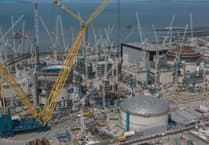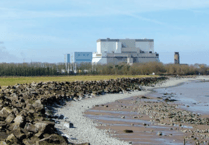NATIONAL Grid and its 12 specialist contractors are celebrating a total of four million hours worked on the Hinkley Connection Project while maintaining a world-class safety performance.
The project runs for 35 miles from Bridgwater to Avonmouth, and will connect six million homes and businesses to electricity generated by Hinkley Point C.
Construction began in 2018 and is set for completion next year.
A National Grid spokesperson said the four million hours had been put to good use with key achievements including:
Constructing 116 pylons to a new T-pylon design in a world-first
Installing and energising five miles of underground cables in the Mendip Hills, a designated National Landscape
Planting more than 5,000 trees along the route
Volunteer and STEM events with schools along the route, plus more than 500,000 school children supported via STEM grants
Preserving a record of a previously undiscovered Roman settlement
Constructing two new sub-stations in Shurton and Sandford
Removing 249 pylons from the Somerset landscape to make way for the new connection
Making available more than £1.6 million of grant funding for 100 different community projects
Constructing and opening a new traffic-free section of the popular Strawberry Line Heritage Path
National Grid project director Steven Haskayne said: “The total number of working hours demonstrates the scale of the project and what it takes to deliver the critical infrastructure that will build future resilience into the network and support the UK’s net zero by 2050 ambitions.
“I am proud of every moment that each team member has dedicated to the Hinkley Connection Project, and what we have collectively achieved so far.
“Even more important for me is the fact that we have achieved all this while maintaining the highest safety standards.
“No programme milestone is more important than ensuring everybody gets home safely to their families at the end of the day.”
Hinkley Point C’s first nuclear reactor is currently due to start generating power in June, 2027, although a recent review revealed the timetable was at risk of slipping again by another four years to 2031.





Comments
This article has no comments yet. Be the first to leave a comment.